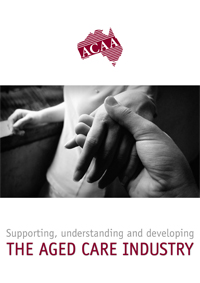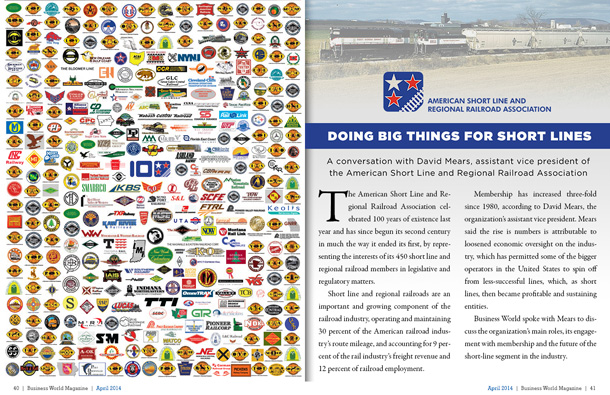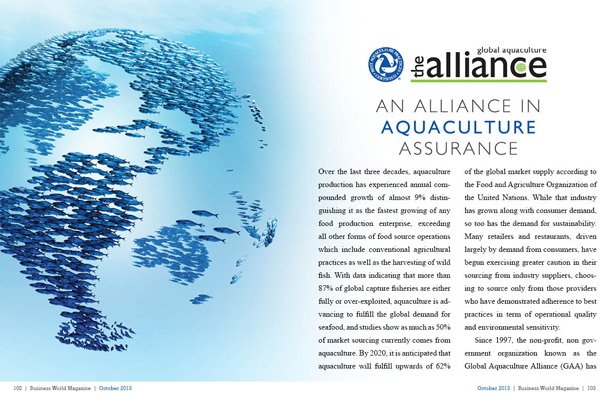
Supporting, understanding and developing the aged care industry

It has often been said by many people, and for many different reasons, that the true measure of the greatness of any society is how they treat their elderly. While the saying’s origins have been lost over time, the consensus is that it holds to be true. Over time, this idiom g has grown to include society’s cultural minorities, the sick, and the young. The idea remains that the goodness of a people, a town, a country, or a civilization can be measured by how it cares for those who cannot care for themselves. In Australia, this role was historically administered by religious organisations and charities. As the need and requirements for aged care grew, the government began to take over a portion of that role, with private enterprise on their heels. Today, those of retiring age are far better off than they have been in the past, and the industry has changed from one described as “God’s waiting room”, into a real choice for seniors. Aged Care Association Australia (ACAA) stands as a professional, national industry association, that caters to providers of residential and community aged care services. Beginning as an industry association that included private hospitals, the organisation has had a number of different lives and roles. “In one iteration or another, our history goes back to at least the 1950s,” says Rod Young, CEO of ACAA.
“We are an industry employer’s association representing providers of retirement living, seniors housing, community care and residential care,” says Young. “We represent about a thousand service providers in all Australian jurisdictions, other than in the Northern Territory.” This means that almost every aged care provider in their geographical operational reach has some involvement with ACAA. As the only organisation that represents care providers from the private and voluntary sectors on a national basis, national and territorial events are of particular importance to ACAA. “This year we are looking at a major review of the industry and its future directions. This has been undertaken by the Productivity Commission.” Young, and the ACAA, have already had a chance to preview the draft report back in January. “It was made with consultations with the unions, consumers and providers.” The report, released this August, is being considered in detail and the ramifications are being discussed. “By November we hope to have developed a fairly strong focus for our annual conference to look at the likely impact on business sustainability, future business structures, and what impacts that the report will have on models of care.”
Bringing everyone together
The ACAA annual conference draws many of their members, and industry experts. This year’s Congress is the Association’s 30th, and will be held between the 6th and 8th of November. The tongue in cheek title is ‘Magical Mystery Tour – the long and winding road’, and it speaks to a generation that is serving the aged community as well as those living in it. It promises to be yet another informative and innovative showcase of industry developments and technology. Young jokes that they have not received any communications from Yoko asking them for a cut – yet. “We’re a federated organisation with offices in each state – which are stand-alone legal entities in their own right. They all run substantial education programs, but we run a national program each year, which is this Congress,” he says. He notes that the Congress attracts over a hundred independent exhibitors each year. “It has become a great focal point for our members and those involved in the industry, providing them great opportunities to network and learn. It also has become a bit of an end-of-year celebration opportunity as well.” Part of this celebration includes the presentation of ACAA’s awards, in which they have several categories including Employer of Choice Awards, and Building Awards.
An industry of change
One concern that ACAA is looking at right now is the age profile of the workers within the industry. “The average age of a worker in the industry is 52 years of age for our registered nurses, and about 47 for our other workers and care givers,” says Young. This is an older than average workforce, and one of the things that ACAA is dealing with is how to present the Aged Care industry as an attractive employment and career opportunity for younger workers. This is especially important since it is predicted that those that are of retirement age will outnumber those in the workforce. If this trend continues it is possible that aged care may be one of the largest growth industries in both Australia and the world. “It will almost certainly have a major impact between those receiving care and those providing it,” says Young.
“There are several interlocking issues here. Current projections on our industry growth and workforce-demand over the next 30 to 35 years suggest the number of people requiring care and services will multiply by at least double. While the number of workers in the industry and associated fields will triple.” Young admits that these stats make the industry look like a stable boom industry. “The demand for services for when people reach their 80th year and older, and when you look at the growth in demand for the very old age group – it will quadruple over the next 30 years.” This is a result of people, in the developed world, living longer, healthier lives.
These are changes that Young sees ACAA preparing the industry for, but Young also says that they have already been there to help it achieve the development level it enjoys now. “30 years ago nursing homes were used for a whole range of different purposes: rehabilitation, recuperation, long term low level care servicing, chronic disease, people suffering from age related disabilities, and of course the frail aged,” he says. “Today, the nursing home is almost entirely populated by the frail aged, and that includes those who are suffering from the various dementias. It is a very homogenous group of care recipients, numbering 160 thousand plus residents and 50 000 community care recipients.” He says that there are at least 5000 people in the system that are considered young chronic disease sufferers, or who have brain acquired injury. He believes that this is an inappropriate setting for both the recipient and the caregiver, to receive care. “When you are looking at a change in the resident profile, and the services they demand, you see this very rapid shift in the last 20 years, where the average age at entry has grown by about 8 years.” This means that those entering the system now are not the socially active group that the industry of the past were used to dealing with. They more and more often require specialised high-care treatment and attention.
For the next five years, Young predicts that the Government will largely accept the substantial recommendations that the Productivity Commission’s report holds. “It will have a significant impact on how aged care is delivered in the future. Some of the likely impacts are going to be in medical services,” he says. After the report, he hopes rebates for medical services will improve GP funding. Given the systems recommended in the report, Rod Young believes the industry will generate new methods for providing services to clients in their care. The ACAA will take a leading role in the education and training of team-members, in order to do what they have been doing for over 60 years – provide a guiding hand.






